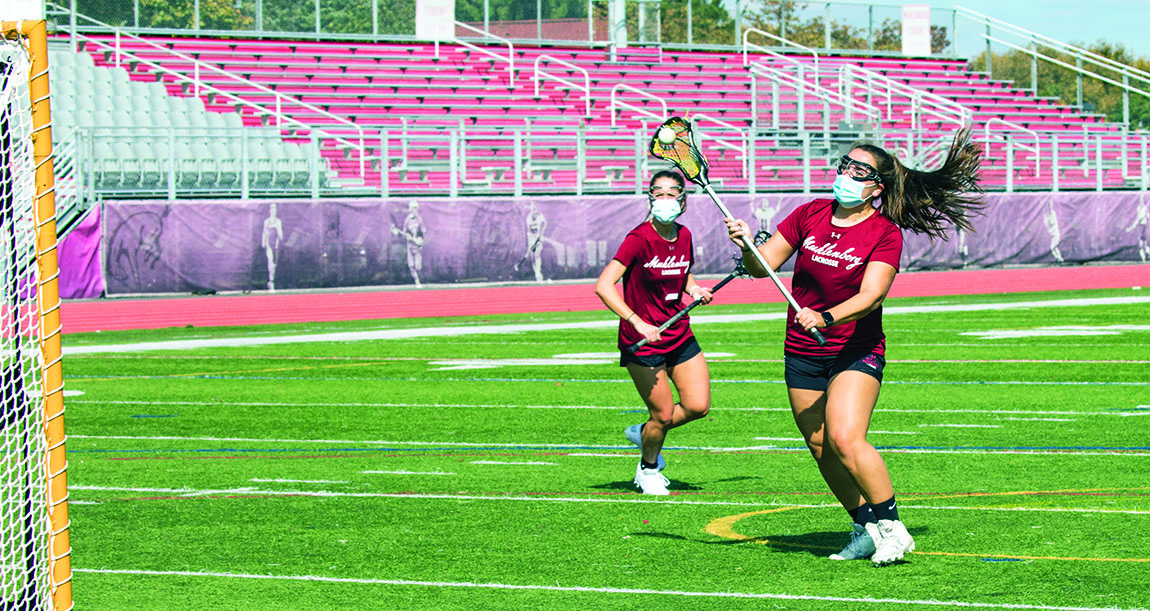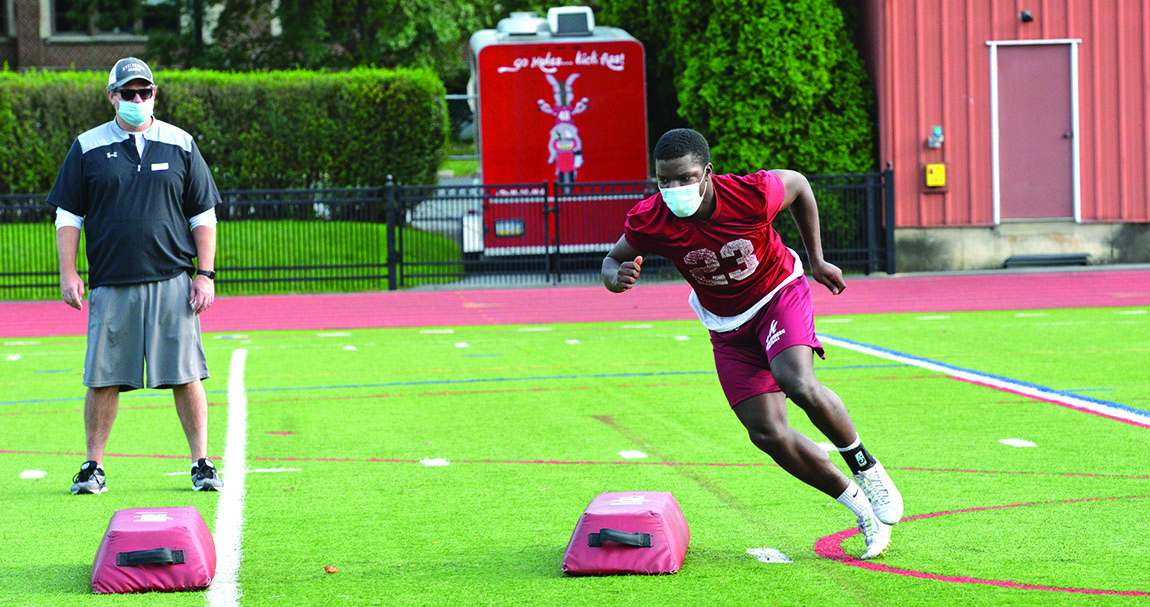Face Masks: No Longer Just for Football
Learn how coaches and athletes are navigating a fall season with major limitations on what can be done in person.By: Mike Falk Monday, November 9, 2020 09:02 AM
 Lexi Siegel ’24 shoots as Elisabeth Loiselle ’24 looks on at a women's lacrosse practice. Photo by Paul Pearson
Lexi Siegel ’24 shoots as Elisabeth Loiselle ’24 looks on at a women's lacrosse practice. Photo by Paul PearsonKeeping their teams connected during a pandemic, with first-years mostly on campus and returning athletes mostly scattered at their homes around the country, has required Muhlenberg’s head coaches to show some creativity and flexibility. No one has displayed more of the latter than the softball team.
Once a week, the Mules gather in front of their computers to take a virtual barre class with former women’s basketball player and assistant coach Katy Mitton ’14, who is an instructor at Barre3 Lehigh Valley in Bethlehem.
Head Coach Sarah Leavenworth came up with the idea after she started taking the class herself (virtually).
“I figured this would be something different and very unlike what they do with DT [Darin Thomas, Muhlenberg’s director of strength and conditioning], so I reached out to Katy, who connected me with the owner of the studio. We have a team membership through the end of November,” she says.
Every Wednesday night, Mitton livestreams a 60-minute workout that combines strength and conditioning, cardio and mindfulness. Barre, which draws from yoga and Pilates, is designed to help increase strength (both physical and mental), reduce stress, build a mind-body connection and, yes, improve flexibility.
Both parties are enjoying the pairing immensely. In an Instagram post following one of the sessions, the softball team thanked Mitton, noting that “we really got to work muscles we didn’t even know we had.”
Whether Zoom is used to take barre classes or talk about academic work and mental health, the platform has become as much a part of sports team practices as pinnies and water bottles as coaches and athletes navigate this unusual semester.
John Washington ’22, one of a handful of upperclassmen practicing with the football team, runs sprints under the direction of Assistant Coach Brett Sawyer ’98. Photo by Mike Falk
The athletes on campus began in-person practices on August 31, one week after the start of classes, following the NCAA’s three-phased return to sports activity. Phase I was characterized by small workout/practice groups, no sharing of equipment and training sessions focused on individual skill work and conditioning. The permitted size of workout/practice groups increased in Phase II, which added shared equipment and organized group activities. Phase III allows for competition.
No intercollegiate competition, though—the Centennial Conference canceled competition through the end of the calendar year in mid-August, after the NCAA announced that there would be no fall championships in 2020.
With the possibility of the fall teams (cross country, field hockey, football, soccer and volleyball) moving their seasons to the spring, coaches are using the fall to work on individual skills with the newcomers while also keeping the returning athletes engaged through regular virtual meetings.
In addition to incorporating mask breaks, distancing and ball disinfecting, coaches also have needed to adjust their practice routines because of the available players. With a large class of 13 first-years, Leavenworth can field a complete softball team. By contrast, the first men’s basketball practice of the year featured more coaches (three) than players (two).
The silver lining, of course, is that the first-year athletes are getting more individual attention, which should pay off for them in the long run.
“With a smaller team, the last month of soccer practices has been intense and productive, allowing the freshmen to adjust to our style of play,” says Carly Shaffer ’21, one of a handful of returning athletes approved to study on campus in the fall. “It has definitely been different without our upperclassmen teammates, and I hope that we will be able to reunite as a team in the spring.”

